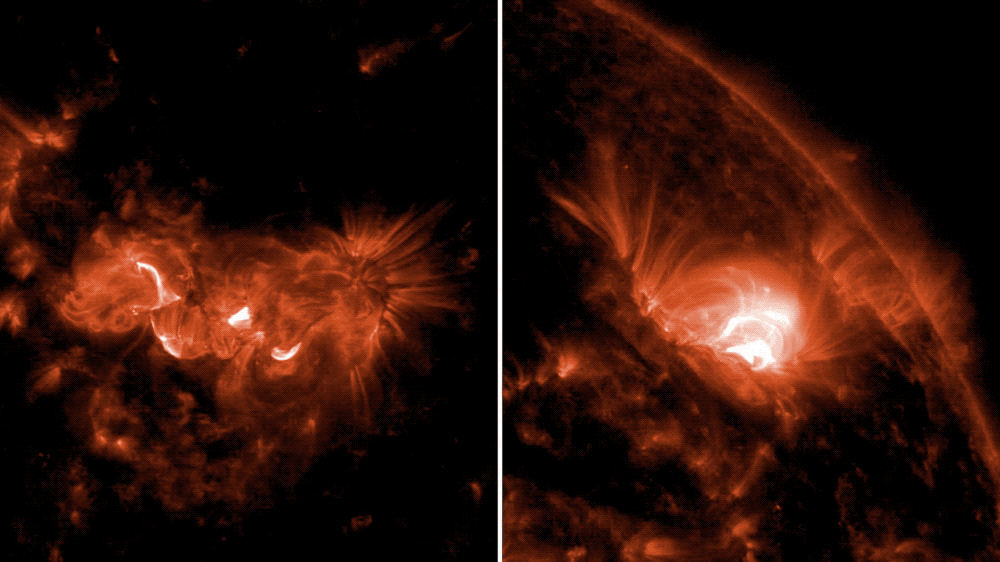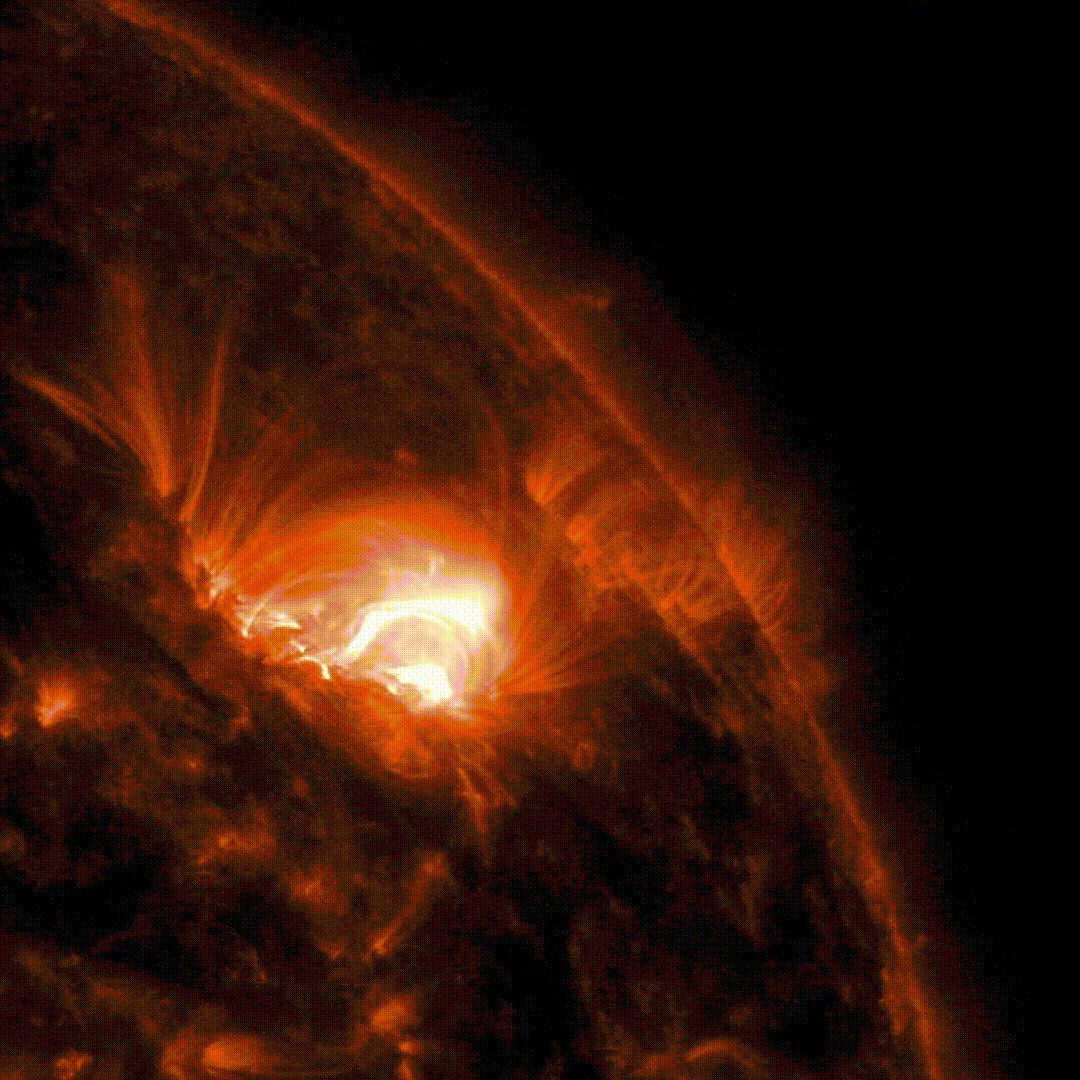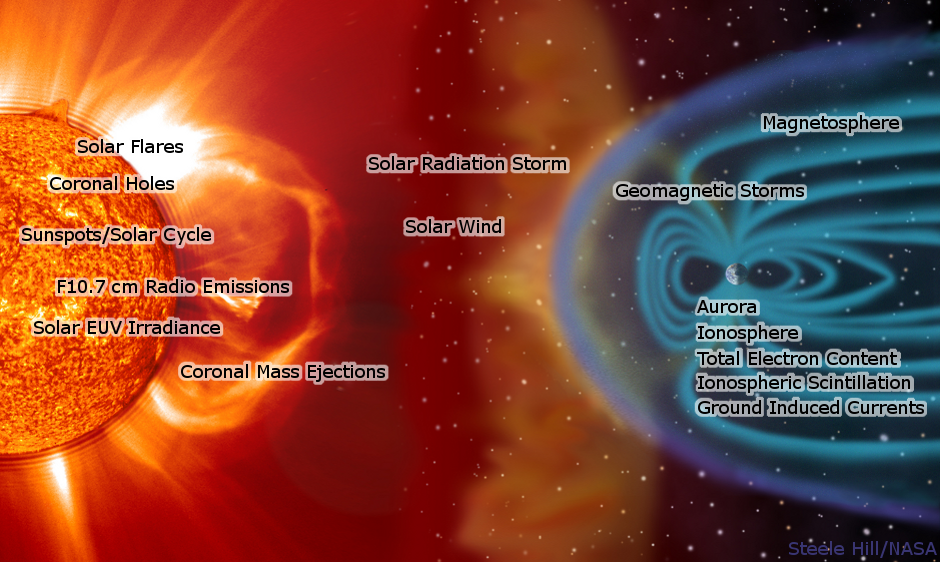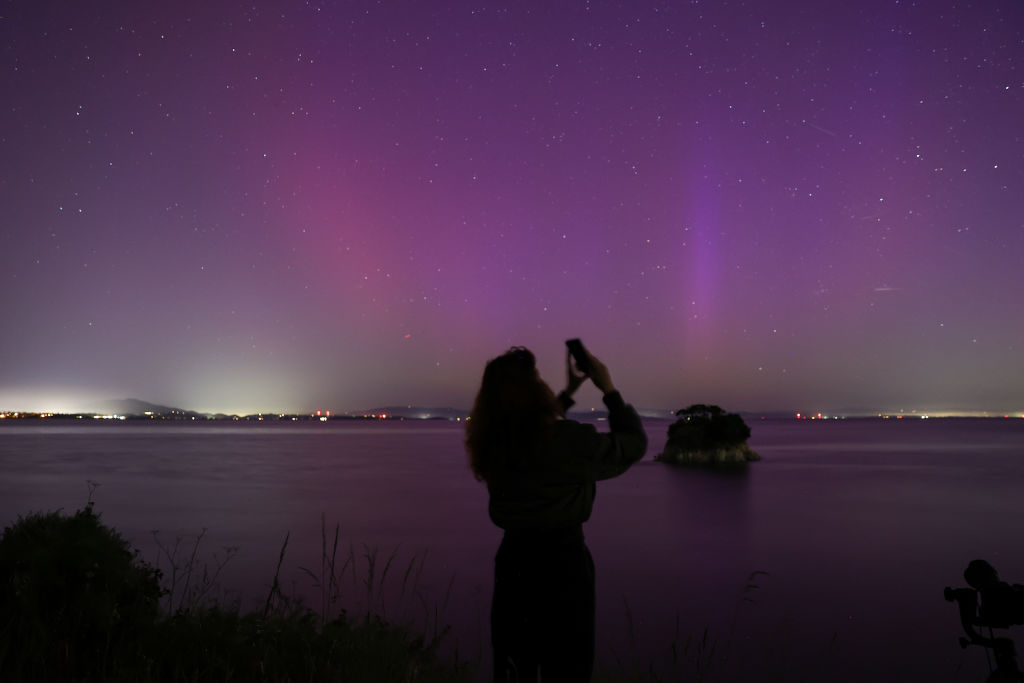[ad_1]
“If you can imagine a space weather storm strong enough to knock out power from New York down to the Carolinas for weeks, that’s not ‘a bad day’ anymore. That’s a national security risk,” said Bryan Brasher, Project Manager at the Space Weather Prediction Center for the National Oceanic and Atmospheric Administration (NOAA.)
Brasher works with the team that predicts space weather events like the recent solar storms we experienced.
If a massive geomagnetic storm like the Carrington Event were to happen today, he said, it could interfere with radio communications and GPS signals and disrupt operations on spacecraft and even pipelines and railroads.
But Brasher is optimistic that our understanding of space weather prediction has improved over the last century — and more research is being done to mitigate any catastrophic events that could result from a large solar storm event.
“I think today we like to think that by doing our job to provide forecasts and information to these critical system operators, that they will take mitigating factors to help prevent failures,” he said.

Other large solar storms that brought aurora sightings to California
Here’s a list of other large geomagnetic storms that disrupted technology in parts of the U.S. These storms may not necessarily have caused disruptions in California, but sightings of the aurora were visible in the region during most of these storms:
- November 1882: A report in the SF Examiner in 1882 mentions interruptions to telegraphic communications in places like New York, Chicago, and Boston, with sightings of the aurora visible from Mendocino. “The hues are deep crimson, shading to light green on the horizon. It lasted several hours,” wrote the Examiner.
- May 1921: A powerful solar storm known as the New York Railroad Storm caused a fire near the Grand Central Terminal in New York. There were reports of damages to telegraph systems in Europe and the Southern Hemisphere. Reports of aurora sightings in San Francisco, Oakland, and Santa Clara were described as “brilliant hued skies,” according to the San Francisco Chronicle.
- August 1972: Solar flares and coronal mass ejections (CMEs) caused solar storms that disrupted communication grids and satellite communications in North America, with reports saying it caused the accidental detonation of a number of U.S. naval mines near North Vietnam.
- March 1989: Although no technological disruptions occurred here in California, a “night sky glow” that “varied in color from a whitish green to a brilliant red” was seen in Napa, Solano, Mendocino and San Luis Obispo, according to SF Examiner.
- October 2003: Also known as “the Halloween solar storms,” this event caused interruptions to satellite-based systems and communications and aircraft were advised to avoid high altitudes near the polar regions. Again, aurora was visible in California as reported by Santa Cruz Sentinal: “A mysterious light that appeared to fall from the sky over the Santa Cruz Mountains had many residents calling emergency dispatchers Thursday night.”

The science behind solar storms: Understanding space weather
To understand space weather, we have to look at the (literal) star of the show: the sun. While this big ball of hot gas is more than 90 million miles away, its influence on Earth and our environment is massive.
Solar winds, flares and ‘cannonballs’
The sun’s dynamic and complex body continuously emits charged particles into space called solar wind, which astronomer Fraknoi describes as “kind of like a breeze of particles from the sun.”
“It goes in all directions from the sun, and it always comes toward the Earth,” he said.
“There’s a complex magnetic field woven throughout the sun,” Fraknoi said, thanks to these charged particles and the rotation of the sun. And as the magnetic field rotates with the sun, it stretches, twists and snaps like a rubber band.
When that snap happens, particles and energy from the sun are released into space, causing a giant flash of light called a solar flare — which travels at the speed of light in all directions and takes about eight minutes to reach Earth.
But when a larger amount of those same particles is released, that’s called a coronal mass ejection (CME) — which Fraknoi describes as “blobs of charged particles” hurled out in space. CMEs take one to three days to reach Earth — and unlike solar flares that appear as a flash of light, CMEs look more like explosions in space.

Solar flares almost always precede a CME. And because it can take days for a CME to reach Earth, flares let the team at Space Weather Prediction Center at NOAA send out early warnings to the masses, Fraknoi said.
Most times, these CMEs from the sun are pointed towards random directions in space. “But every once in a while, the coronal mass ejection is pointed toward Earth,” Fraknoi said. And when it is, that’s when we get a strong geomagnetic storm.
Brasher said he likes to think of solar flares like the flash at the end of a cannon when it shoots off — and “you can think of the cannonball as being like a CME,” he said. “It’s massive, it has weight. It travels much slower than the speed of light — and most importantly, has a direction component to it.”
The Earth also has its own magnetic fields that function as a “protective bottle” known as a magnetosphere. The Earth’s magnetosphere is weaker in the north and south poles, noted Fraknoi — making places like Alaska and Antarctica great spots to see the aurora more regularly.
What causes these aurora?
When charged particles flowing from the sun get caught up in the Earth’s magnetic field, it energizes the atmosphere’s molecules (like nitrogen and oxygen), excites them and creates a colorful display of light we know as the aurora, or the northern lights.
The different colors we see from Earth — the hues of green, red, purple, and blue — depend on which molecule is being excited by the charged particles and on how much energy is being exchanged.

If the northern lights are most common around the poles, how do we see them all the way here in the Bay Area?
During strong geomagnetic storms like the one we experienced over a week ago — usually when a CME is involved — the aurora that is usually only visible in those polar regions is now supercharged and distributed even more geographically, making them visible in places you don’t normally see them.
When could be my next chance to see the northern lights in the Bay Area?
While many were lucky enough to clearly see the recent aurora caused by one of the largest solar storms in over 20 years, folks who weren’t so fortunate shared memes on social media about their FOMO, with one user calling this elusive glow the “aurora fogealis.”
But if that was you, there’s still hope. Experts say we might see more auroras in the next couple of years, thanks to the sun’s cycle.

The sun undergoes an eleven-year solar cycle, with solar activity rising and falling. We are currently approaching the peak of the solar cycle, also known as the solar maximum. During this period, space weather events like solar flares and CMEs can happen more often.
“During the solar cycle, the sun’s magnetic field goes from being really uniform and easy to getting really complicated, intertwined and complex,” Brasher said.
Scientists predict these solar storms will reach their peak in 2025. But sometimes, the biggest storms can hit years after the solar maximum.
To stay up to date with the latest news on geomagnetic storms, you can subscribe to email updates from the Space Weather Prediction Center at NOAA. Brasher recommends subscribing to notifications of G4 and G5 storm alerts.
“The mysteries of the sun are still out there,” Brasher said. “We have a lot to understand about the dynamo, and the dynamics of it and how it impacts Earth.”
[ad_2]
Source link
